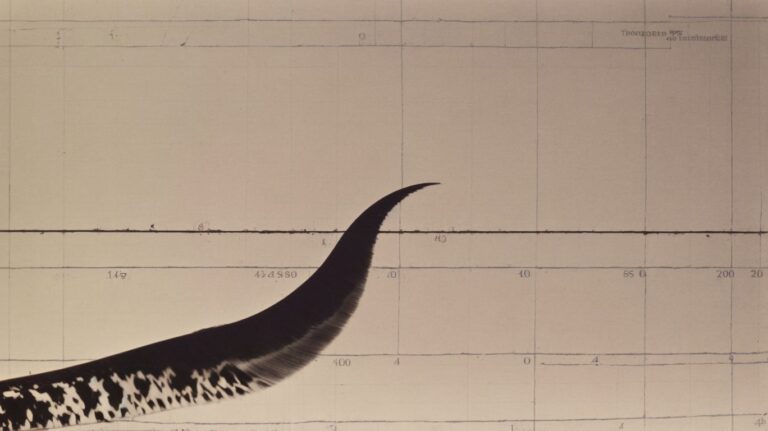Have you ever wondered how we are able to sense the position and movement of our bodies without having to look? The kinesthetic sense, also known as proprioception, plays a crucial role in our daily lives and in our understanding of the world around us.
In this article, we will delve into the components of the kinesthetic sense, its development, and the theories surrounding it. We will also explore the role of the kinesthetic sense in psychology, common disorders related to it, and how it can be utilized in therapy.
Join us on this fascinating journey into the world of the kinesthetic sense.
Contents
- 1 What Is the Kinesthetic Sense?
- 2 What Are the Components of the Kinesthetic Sense?
- 3 How Does the Kinesthetic Sense Develop?
- 4 What Are the Theories Surrounding the Kinesthetic Sense?
- 5 What Is the Role of the Kinesthetic Sense in Psychology?
- 6 What Are Some Common Disorders Related to the Kinesthetic Sense?
- 7 How Can the Kinesthetic Sense Be Utilized in Therapy?
- 8 Frequently Asked Questions
- 8.1 What is the kinesthetic sense in psychology?
- 8.2 How does exploring the kinesthetic sense in psychology benefit individuals?
- 8.3 What are some common exercises used to explore the kinesthetic sense in psychology?
- 8.4 How does the kinesthetic sense relate to learning and education?
- 8.5 Can the kinesthetic sense be improved or enhanced?
- 8.6 What are some potential psychological disorders or issues related to the kinesthetic sense?
What Is the Kinesthetic Sense?
The kinesthetic sense, also known as kinesthesis, is the ability to sense and perceive body movements and positions without relying on the typical five senses such as sight or hearing.
What makes kinesthetic sense unique is that it involves the feedback provided by proprioception, which is the body’s awareness of its own position and movement. This feedback is made possible by specialized sensory receptors like Pacinian corpuscles, which are sensitive to pressure and vibration, and play a crucial role in transmitting information about muscle tension and joint angles to the brain. Through this intricate network of sensory information, the kinesthetic sense enables individuals to navigate their physical environment with precision and coordination.
What Are the Components of the Kinesthetic Sense?
The components of the kinesthetic sense include proprioception, which involves the perception of the body’s position, and the coordination of muscles and joints during various activities.
Proprioception plays a crucial role in allowing individuals to have a sense of where their body parts are without relying on visual cues. This enables smooth and coordinated movements, helping in tasks like walking, dancing, or even typing on a keyboard.
Along with proprioception, the vestibular sense also contributes to the kinesthetic sense. The vestibular system, situated in the inner ear, is responsible for our sense of balance and spatial orientation. It provides information about head position and motion, helping us maintain equilibrium.
Proprioception
Proprioception is the sense that allows us to perceive the position and movement of our body parts, relying on sensory receptors in the muscles, joints, and tendons that send signals to the brain’s cortex.
These signals are then processed by various parts of the brain, with the cerebellum playing a crucial role in coordinating muscle movements and maintaining balance.
The primary motor cortex interprets these signals to execute precise movements and control muscle contractions, showcasing the intricate link between proprioception and motor function.
Enhancing proprioception through specialized exercises and neurorehabilitation can not only improve coordination and athletic performance but also aid in injury prevention and rehabilitation.
Vestibular Sense
The vestibular sense plays a crucial role in maintaining balance, coordinating movement, and engaging in various activities by providing sensory input from the vestibular system to the brain.
This intricate system involves a complex network of structures such as the semicircular canals and otolith organs located in the inner ear, which detect motion and orientation of the head.
The information collected by these vestibular components is then transmitted via the peripheral nerves, specifically the vestibulocochlear nerve, to the brainstem and spinal cord.
From here, the brain processes and interprets this data to generate appropriate responses that help us maintain an upright posture, adjust our gaze, and stabilize ourselves during movements.
How Does the Kinesthetic Sense Develop?
The development of the kinesthetic sense is influenced by various factors, including learning styles, exposure to different sensory inputs, and the maturation of the brain’s cortex.
Learning styles play a crucial role in how individuals process and interpret kinesthetic stimuli. Some people may learn best through hands-on experiences, while others may prefer visual or auditory cues. This diversity in learning preferences directly impacts how individuals develop their kinesthetic sense.
Similarly, exposure to varied sensory inputs, such as touch, proprioception, and movement, helps refine and strengthen the kinesthetic abilities. The cortex, a significant area of the brain responsible for processing sensory information, plays a pivotal role in organizing and making sense of the data received from the kinesthetic senses.
What Are the Theories Surrounding the Kinesthetic Sense?
The theories surrounding the kinesthetic sense include the Theory of Multiple Intelligences, proposed by Howard Gardner, and the Embodied Cognition Theory, which emphasizes the role of the body in cognitive processes.
Howard Gardner’s Theory of Multiple Intelligences suggests that individuals have various forms of intelligence, including bodily-kinesthetic intelligence, which relates to physical movement and coordination.
On the other hand, the Embodied Cognition Theory, as proposed by Wilson & McKenzie, posits that cognition is not just confined to the brain but is influenced by the body’s interactions with the environment.
Franck Rasmus further elaborates on this concept, highlighting how our bodily experiences shape our cognitive abilities and understanding of the world around us.
The Theory of Multiple Intelligences
The Theory of Multiple Intelligences by Howard Gardner posits that individuals have different types of intelligences, including bodily-kinesthetic intelligence, which focuses on physical activities and hands-on learning.
Gardner’s theory emphasizes that not all individuals exhibit intelligence in the same way; some excel in logical-mathematical or linguistic intelligence, while others may thrive in musical or interpersonal realms. The bodily-kinesthetic intelligence stands out for those who learn through movement and physical engagement.
Regarding learning styles, incorporating bodily-kinesthetic intelligence can enhance experiential learning and skill development. This type of intelligence is prevalent in occupations that require physical coordination, such as dancers, athletes, and artisans.
In therapeutic settings, understanding bodily-kinesthetic intelligence can be beneficial for creating tailored interventions for individuals with neurological disorders or physical disabilities. By tapping into this intelligence, therapists can design customized treatment plans that align with the individual’s strengths and abilities.
The Embodied Cognition Theory
The Embodied Cognition Theory highlights the interconnectedness of the brain and body, emphasizing how bodily movements and experiences shape cognitive processes, such as maintaining balance and coordination.
In this context, disorders that affect movement and balance provide a unique lens to understand the intricate relationship between physical actions and mental functions. For instance, in Parkinson’s disease, a neurodegenerative disorder, individuals experience challenges in movement control, which can significantly impact their cognitive abilities. Research suggests that targeted physical interventions, focusing on enhancing motor skills and balance, can positively influence cognitive outcomes by promoting neural plasticity.
What Is the Role of the Kinesthetic Sense in Psychology?
The kinesthetic sense plays a vital role in psychology by influencing motor learning, shaping body image perceptions, and contributing to emotional regulation through heightened body awareness.
When we engage in physical activities that require coordination and movement, such as playing sports or dancing, our kinesthetic sense allows us to understand where our body is in space and how it moves. This sense of proprioception is directly linked to the sense of touch, as receptors in our muscles and joints send signals to the brain, particularly the frontal lobe. These neural pathways not only aid in refining our motor skills but also impact our sense of body image, influencing how we perceive ourselves physically. The kinesthetic sense plays a crucial role in emotional regulation, as it can help individuals connect with their bodies and manage stress or anxiety through movement and physical expression.
Motor Learning and Skill Acquisition
Motor learning and skill acquisition are key areas where the kinesthetic sense comes into play, facilitating the mastery of movements and enhancing coordination through therapeutic approaches and movement-based activities.
Enhancing kinesthetic sense through targeted therapies can have profound effects on overall motor performance. Individuals undergoing rehabilitation often benefit from exercises that focus on proprioception and spatial awareness.
- Experts like Kendra Cherry and David Susman underline the importance of incorporating kinesthetic feedback strategies into rehabilitation programs.
- These approaches help individuals not only regain motor function but also promote neuroplasticity and optimize movement patterns.
By engaging the kinesthetic sense in therapeutic interventions, individuals can develop a deeper understanding of their bodies in motion, leading to enhanced motor skills and improved overall quality of movement.
Body Image and Self-Perception
The kinesthetic sense influences body image and self-perception by integrating sensory input related to movements and balance, shaping individuals’ views of themselves and their physical capabilities.
This sensory feedback is crucial in providing individuals with an awareness of their physical bodies, helping them navigate their environment and execute movements with precision.
Disruptions in the kinesthetic sense, often associated with disorders such as peripheral neuropathy, can significantly impair one’s ability to accurately perceive their body in space, leading to challenges in coordination and a distorted self-image.
Emotional Regulation and Body Awareness
Emotional regulation and body awareness are interconnected aspects influenced by the kinesthetic sense, highlighting the role of the cortex and therapeutic practices in enhancing emotional well-being and self-awareness.
Having a deeper understanding of these connections can lead to the development of effective therapeutic strategies that not only bolster mental health but also enhance overall self-care practices. When we cultivate an increased body awareness, we can better tune into our emotions and responses, fostering a more holistic sense of well-being. The engagement of the cortex in this process underlines the brain’s intricate involvement in regulating emotions and integrating sensory information.
Resources like Verywell Mind and the APA’s Dictionary of Psychology provide valuable insights into the scientific underpinnings of emotional regulation and somatic awareness, which are crucial for mental health professionals and individuals seeking to optimize their emotional well-being.
What Are Some Common Disorders Related to the Kinesthetic Sense?
Common disorders related to the kinesthetic sense include dyspraxia, which affects coordination, and sensory processing disorder, impacting the interpretation of sensory information.
Dyspraxia is characterized by difficulties in planning and executing coordinated movements, leading to challenges in activities like writing, dressing, or playing sports. Individuals with dyspraxia may struggle with balance, fine motor tasks, and spatial awareness.
On the other hand, sensory processing disorder can result in hypersensitivity or hyposensitivity to sensory input, causing distress or avoidance in certain environments. These disorders can be compared to the motor symptoms seen in conditions like Parkinson’s disease, where coordination and movement coordination are affected due to neurodegeneration.
Dyspraxia
Dyspraxia, a common disorder related to the kinesthetic sense, affects coordination and motor skills, often requiring therapeutic interventions and movement-based therapies to improve daily functioning.
The brain’s cortex plays a significant role in dyspraxia, as it is responsible for coordinating movements and processing sensory information. Individuals with dyspraxia may struggle with simple tasks like tying shoelaces, buttoning shirts, or even holding a pencil properly.
Occupational therapy, which focuses on developing fine motor skills and coordination, is often used to help individuals with dyspraxia improve their daily activities and independence. Engaging in activities such as yoga, dance, or sports can also be beneficial, as they promote body awareness, balance, and coordination.
Sensory Processing Disorder
Sensory processing disorder disrupts the integration of sensory input, affecting balance, coordination, and overall sensorimotor functions, requiring specialized interventions to address sensory challenges.
The cerebellum plays a crucial role in regulating motor movements and sensory functions, contributing significantly to balance and coordination. Individuals with sensory processing disorder often exhibit difficulties in processing and responding to sensory stimuli, leading to challenges in fine and gross motor skills.
Interventions for sensory challenges may include activities that target different learning styles such as visual, auditory, or kinesthetic approaches, tailored to enhance sensory integration and improve motor planning.
How Can the Kinesthetic Sense Be Utilized in Therapy?
The kinesthetic sense can be effectively utilized in therapy through sensory integration therapy, which focuses on harmonizing sensory input, and movement-based therapies that enhance coordination and motor skills.
Sensory integration therapy aims to help individuals improve their ability to process and respond to sensory information, enhancing their overall functioning. This therapeutic approach often targets the proprioceptive system, which is responsible for body awareness and spatial orientation. By engaging in activities that stimulate this system, such as heavy work tasks or deep pressure input, individuals can better regulate their movements and emotions.
Movement-based interventions leverage the vestibular system to promote balance, postural control, and coordination. Activities like swinging, spinning, and jumping can help individuals develop a stronger sense of equilibrium and spatial orientation. This holistic approach to therapy not only enhances motor skills but also fosters emotional regulation and self-confidence.
Sensory Integration Therapy
Sensory integration therapy aims to improve sensory processing and integration, enhancing balance, coordination, and motor skills through structured activities and interventions.
Activities incorporated in sensory integration therapy are designed to provide various sensory inputs, such as touch, proprioception, and vestibular stimulation, to help individuals regulate their responses. These activities can include swinging, bouncing on a therapy ball, playing with textured materials, and engaging in obstacle courses. The therapy follows the principle that by experiencing different sensations in a controlled environment, the brain can learn to process and respond to sensory information more effectively.
Movement-Based Therapies
Movement-based therapies leverage physical activities and exercises to enhance balance, coordination, and motor skills, providing therapeutic benefits for individuals with kinesthetic challenges.
Engaging in these therapies can lead to significant improvements in overall physical well-being by targeting specific areas that may be underdeveloped or require remediation. By incorporating various movement-based activities such as yoga, dance, or tai chi, individuals can not only enhance their motor skills but also improve their proprioception and spatial awareness.
These therapies can be tailored to suit the individual needs of each person, allowing for personalized treatment plans that address specific deficits or areas of concern. The interactive and dynamic nature of movement-based therapies also helps in boosting self-confidence and fostering a sense of achievement and give the power toment.
Frequently Asked Questions
What is the kinesthetic sense in psychology?
The kinesthetic sense is the sense that allows individuals to feel and sense their body’s movement, position, and orientation. In psychology, it is also known as the proprioceptive sense and is an important aspect of motor control and body awareness.
How does exploring the kinesthetic sense in psychology benefit individuals?
Exploring the kinesthetic sense can help individuals develop a better understanding and awareness of their body’s movements and positioning. This can lead to improved coordination, balance, and motor skills, as well as a deeper connection between the mind and body.
What are some common exercises used to explore the kinesthetic sense in psychology?
Some common exercises include practicing balance and coordination activities, such as standing on one leg or walking on a balance beam, as well as engaging in activities that require fine motor skills, such as drawing or writing.
How does the kinesthetic sense relate to learning and education?
The kinesthetic sense plays a crucial role in learning and education as it allows individuals to physically engage with the material being learned. Kinesthetic learners, in particular, benefit from hands-on activities and movement-based learning experiences.
Can the kinesthetic sense be improved or enhanced?
Yes, the kinesthetic sense can be improved through regular practice and physical activities that challenge the body’s movements and coordination. It is also important to pay attention to and tune into the body’s sensations and movements on a daily basis.
Some potential issues related to the kinesthetic sense include sensory processing disorder, which can affect an individual’s ability to process and interpret sensory information, as well as body dysmorphic disorder, which involves a distorted perception of one’s own body and movements.



